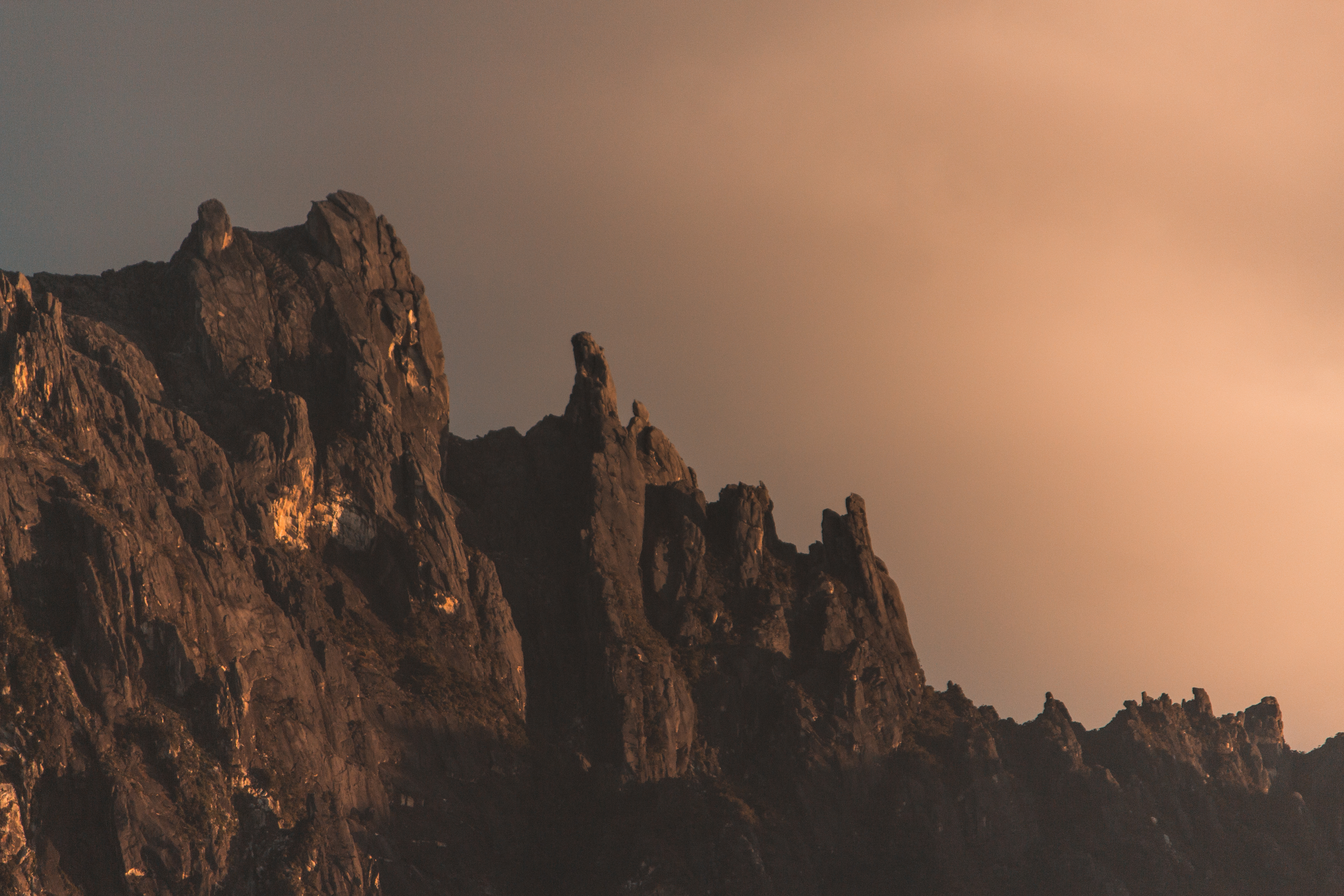|
Kinabalu Montane Alpine Meadows
Mount Kinabalu ( ms, Gunung Kinabalu, Dusun: ''Gayo Ngaran or Nulu Nabalu'') is the highest mountain in Borneo and Malaysia. With an elevation of , it is third-highest peak of an island on Earth, and 20th most prominent mountain in the world by topographic prominence. The mountain is located in Ranau district, West Coast Division of Sabah, Malaysia. It is protected as Kinabalu Park, a World Heritage Site. In 1997, a re-survey using satellite technology established its summit (known as Low's Peak) height at above sea level, which is some less than the previously thought and hitherto published figure of . Phillipps, A. & F. Liew 2000. ''Globetrotter Visitor's Guide – Kinabalu Park''. New Holland Publishers (UK) Ltd. The mountain and its surroundings are among the most important biological sites in the world, with between 5,000 and 6,000 species of plants, 326 species of birds, and more than 100 mammalian species identified. Among this rich collection of wildlife are famo ... [...More Info...] [...Related Items...] OR: [Wikipedia] [Google] [Baidu] |
List Of Southeast Asian Mountains
The following is a list of some of the mountains of Southeast Asia. List of highest mountains See also *List of highest mountains *List of highest mountains of New Guinea *List of islands by highest point *List of ribus (summits in Indonesia with 1000 m topographic prominence) *Seven Summits References {{DEFAULTSORT:List Of Southeast Asian Mountains Mountains A mountain is an elevated portion of the Earth's crust, generally with steep sides that show significant exposed bedrock. Although definitions vary, a mountain may differ from a plateau in having a limited summit area, and is usually higher th ... ... [...More Info...] [...Related Items...] OR: [Wikipedia] [Google] [Baidu] |
Kinabalu Park
Kinabalu Park ( ms, Taman Kinabalu), established as one of the first national parks of Malaysia in 1964, is Malaysia's first World Heritage Site designated by UNESCO in December 2000 for its "outstanding universal values" and the role as one of the most important biological sites in the world with more than 4,500 species of flora and fauna, including 326 bird and around 100 mammal species, and over 110 land snail species. Located on the west coast of Sabah, Malaysian Borneo, it covers an area of 754 square kilometres surrounding Mount Kinabalu, which at 4,095.2 meters, is the highest mountain on the island of Borneo. The park is one of the most popular tourist spots in Sabah and Malaysia in general. In 2010, the park received 611,624 visitors, including 47,613 climbers. The site has been identified by UNESCO as a Centre of Plant Diversity for Southeast Asia, as it contains representatives from at least half of all Borneo’s plant species and is extremely rich in species with ... [...More Info...] [...Related Items...] OR: [Wikipedia] [Google] [Baidu] |
Common Fig
The fig is the edible fruit of ''Ficus carica'', a species of small tree in the flowering plant family Moraceae. Native to the Mediterranean and western Asia, it has been cultivated since ancient times and is now widely grown throughout the world, both for its fruit and as an ornamental plant.''The Fig: its History, Culture, and Curing'', Gustavus A. Eisen, Washington, Govt. print. off., 1901 ''Ficus carica'' is the type species of the genus ''Ficus'', containing over 800 tropical and subtropical plant species. A fig plant is a small deciduous tree or large shrub growing up to tall, with smooth white bark. Its large leaves have three to five deep lobes. Its fruit (referred to as syconium, a type of multiple fruit) is tear-shaped, long, with a green skin that may ripen toward purple or brown, and sweet soft reddish flesh containing numerous crunchy seeds. The milky sap of the green parts is an irritant to human skin. In the Northern Hemisphere, fresh figs are in season from l ... [...More Info...] [...Related Items...] OR: [Wikipedia] [Google] [Baidu] |
Indomalaya
The Indomalayan realm is one of the eight biogeographic realms. It extends across most of South and Southeast Asia and into the southern parts of East Asia. Also called the Oriental realm by biogeographers, Indomalaya spreads all over the Indian subcontinent and Southeast Asia to lowland southern China, and through Indonesia as far as Sumatra, Java, Bali, and Borneo, east of which lies the Wallace line, the realm boundary named after Alfred Russel Wallace which separates Indomalaya from Australasian realm, Australasia. Indomalaya also includes the Philippines, lowland Taiwan, and Japan's Ryukyu Islands. Most of Indomalaya was originally covered by forest, and includes tropical and subtropical moist broadleaf forests, with tropical and subtropical dry broadleaf forests predominant in much of India and parts of Southeast Asia. The tropical forests of Indomalaya are highly variable and diverse, with economically important trees, especially in the families Dipterocarpaceae and Faba ... [...More Info...] [...Related Items...] OR: [Wikipedia] [Google] [Baidu] |
Australasia
Australasia is a region that comprises Australia, New Zealand and some neighbouring islands in the Pacific Ocean. The term is used in a number of different contexts, including geopolitically, physiogeographically, philologically, and ecologically, where the term covers several slightly different, but related regions. Derivation and definitions Charles de Brosses coined the term (as French ''Australasie'') in ''Histoire des navigations aux terres australes'' (1756). He derived it from the Latin for "south of Asia" and differentiated the area from Polynesia (to the east) and the southeast Pacific (Magellanica). In the late 19th century, the term Australasia was used in reference to the "Australasian colonies". In this sense it related specifically to the British colonies south of Asia: New South Wales, Queensland, South Australia, Tasmania, Western Australia, Victoria (i.e., the Australian colonies) and New Zealand. Australasia found continued geopolitical attention in the earl ... [...More Info...] [...Related Items...] OR: [Wikipedia] [Google] [Baidu] |



